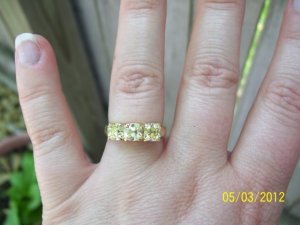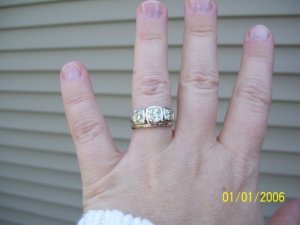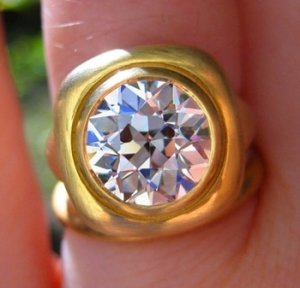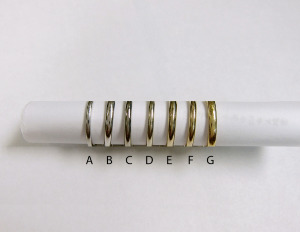Rosebloom
Ideal_Rock
- Joined
- May 23, 2012
- Messages
- 3,943
I have read many different threads with various opinions on the affect of metal choice on the appearance of a diamond's color. For my own reference, and because it might be helpful to others too, I was hoping we could discuss the merits of various metals here. I'm going to start with my understanding of the CW but please chime in to correct me or add your own observations!
Platinum: Makes white diamonds (J and higher) look whiter. May make warmer diamonds (K-O/P) look a little warmer due to the contrast.
Rhodium plated white gold: same as platinum
Unplated white gold: depending on the specific metal composition, looks like a cross between white and yellow gold. The metal's warmth matches the warmth in diamonds J-Mish. Because it does not contrast, it draws less attention to the warmth than a stark white metal would. Some vendors consider it difficult to work with and few offer it as an option.
Yellow gold: Makes colorless and high near colorless diamonds (G/H and higher) look whiter due to the high contrast. May make very white diamonds (DEF) look less icy white. Can add warmth to diamonds I and lower, especially if used in prongs or bezels since the metal may be reflected throughout the stone. Can be used to make a very light yellow (S and lower) look more intensely yellow.
Rose gold: Makes colorless and high near colorless diamonds (G/H and higher) look whiter due to the high contrast. May enhance the warmth of diamonds with visible warmth, especially those with brown or pink undertones as opposed to yellow.
Is any of this accurate? What other conclusions could we add?
Platinum: Makes white diamonds (J and higher) look whiter. May make warmer diamonds (K-O/P) look a little warmer due to the contrast.
Rhodium plated white gold: same as platinum
Unplated white gold: depending on the specific metal composition, looks like a cross between white and yellow gold. The metal's warmth matches the warmth in diamonds J-Mish. Because it does not contrast, it draws less attention to the warmth than a stark white metal would. Some vendors consider it difficult to work with and few offer it as an option.
Yellow gold: Makes colorless and high near colorless diamonds (G/H and higher) look whiter due to the high contrast. May make very white diamonds (DEF) look less icy white. Can add warmth to diamonds I and lower, especially if used in prongs or bezels since the metal may be reflected throughout the stone. Can be used to make a very light yellow (S and lower) look more intensely yellow.
Rose gold: Makes colorless and high near colorless diamonds (G/H and higher) look whiter due to the high contrast. May enhance the warmth of diamonds with visible warmth, especially those with brown or pink undertones as opposed to yellow.
Is any of this accurate? What other conclusions could we add?












300x240.png)